| Another trip to Delamar to continue our explorations. This mine is huge and there's lots more for us to discover. The weather looks a bit foreboding so we've set up our camp kitchen with side walls. We will be sleeping inside the mine again on this trip.
|
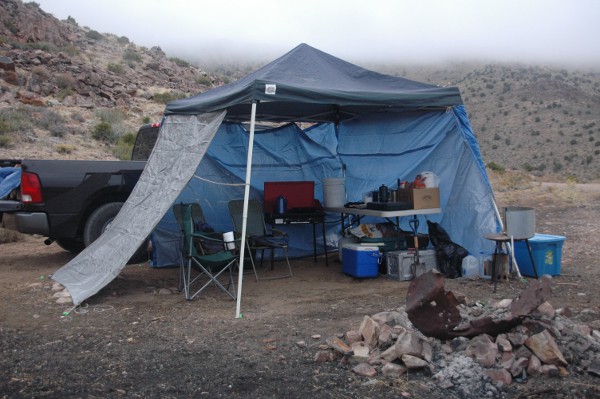 |
| The main haulage level is just about 6,000 feet in elevation. The weather can change dramatically in just a few hours. Makes me think about the miners and their families living in tiny stone houses, wooden shacks, and even tents. |
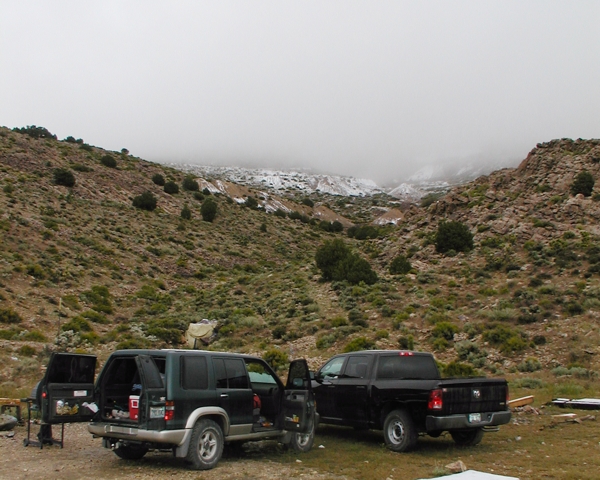 |
| Would love to know the history of this building. It has no windows so I wonder if it was for storage. |
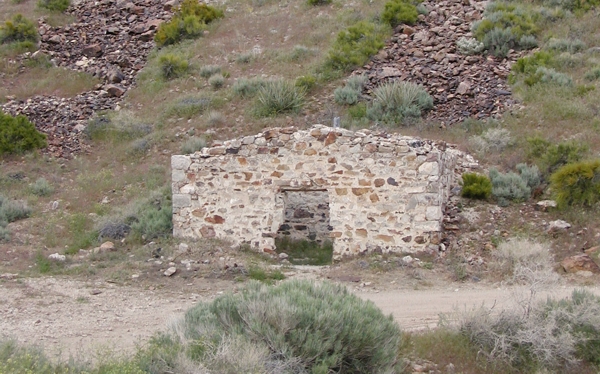 |
| A number of old safes are strewn across the valley obviously abandoned by their owners. Treasure hunters have broken into all of them. Somehow I doubt that the owners left them full of gold and treasure when they left town. |
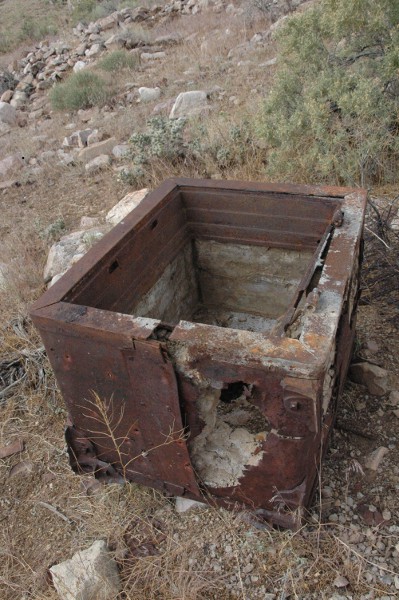 |
| Another stone building. This one had a dividing wall so it may have been two separate homes or two businesses. You can see plaster on the far corner so it was a nicely finished building. |
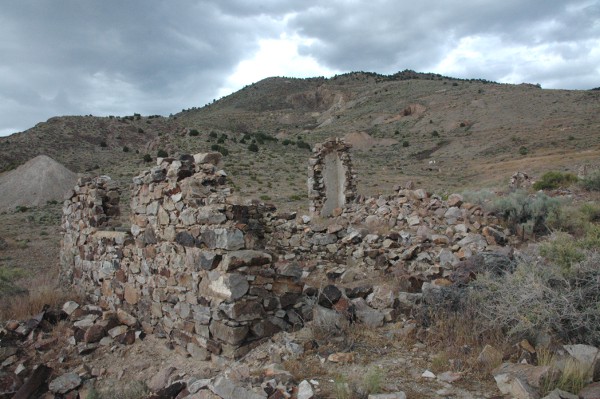 |
| These lids are scattered around the site of the mill. |
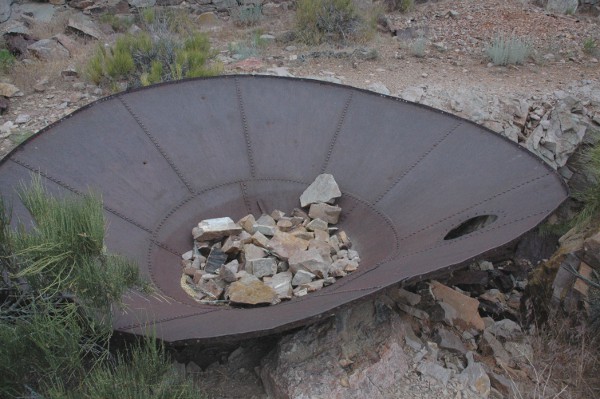 |
| Much of the machinery was powered by belts. Different sized wheels were used to provide different speeds. |
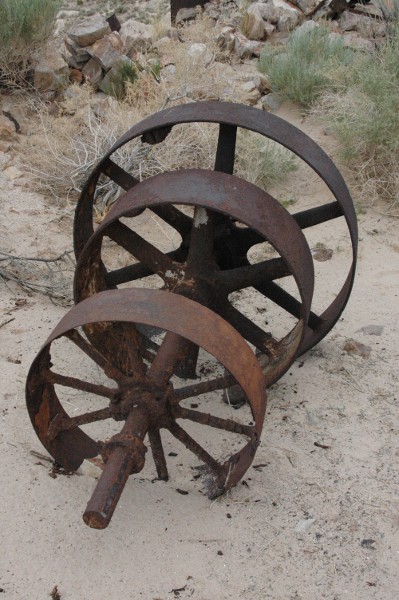 |
| Remnants of the mill. |
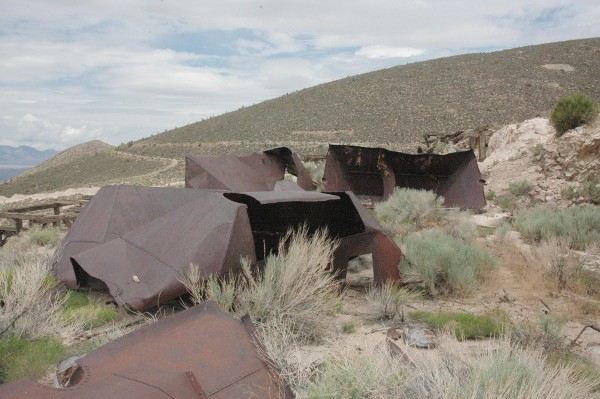 |
| A adit of a smaller mine. Small workings are found across the valley. |
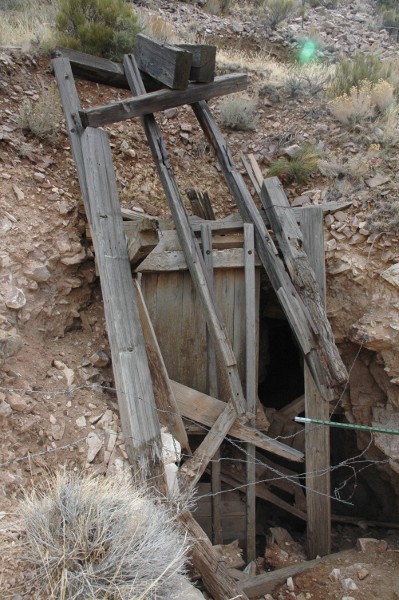 |
| Even handles on a wash tub had a decorative shape. |
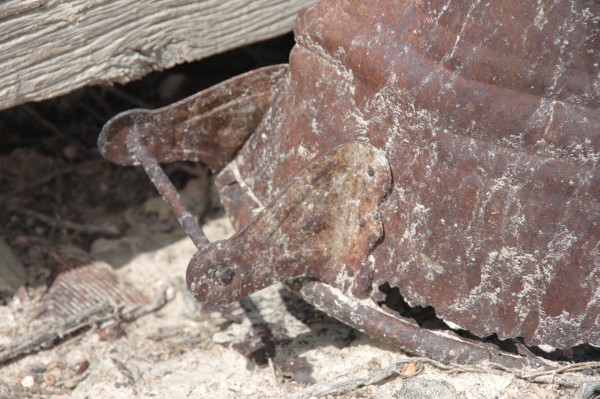 |
| We haul a lot of gear when we head underground. This is my personal gear load so there is a lot of weight that we carry. |
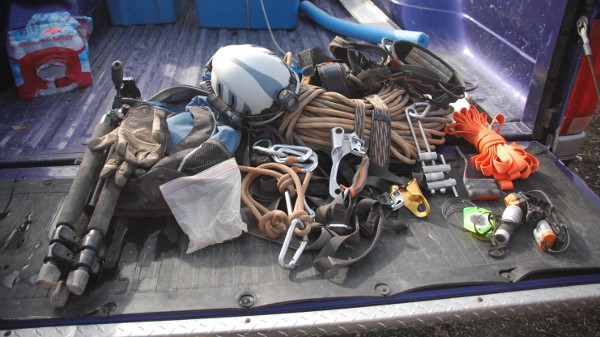 |
| This is the most complete building in the valley. The interior walls were plastered so it must have been quite the beautiful sight when it was new.
|
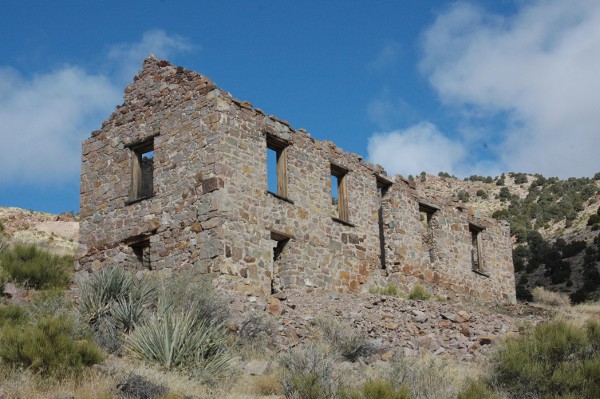 |
| It was two stories. We couldn't tell if the lower floor was living space or for storage. |
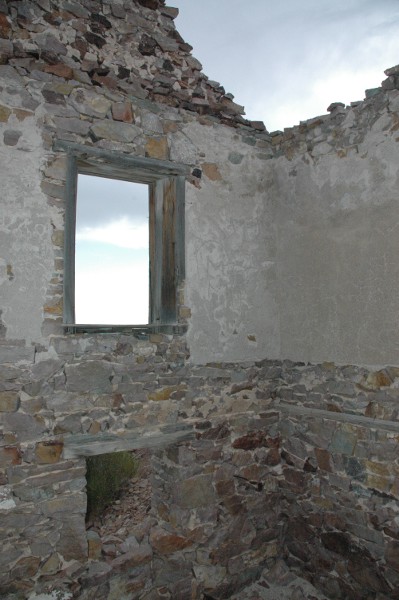 |
| Parked the truck and getting ready to head underground. |
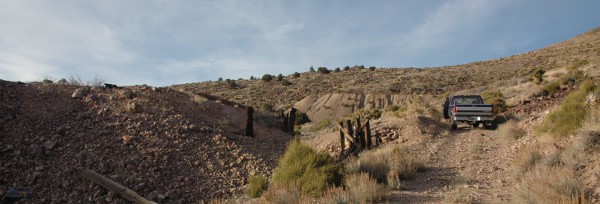 |
| Yes, this is an entrance into the mine. It actually leads to extensive working. |
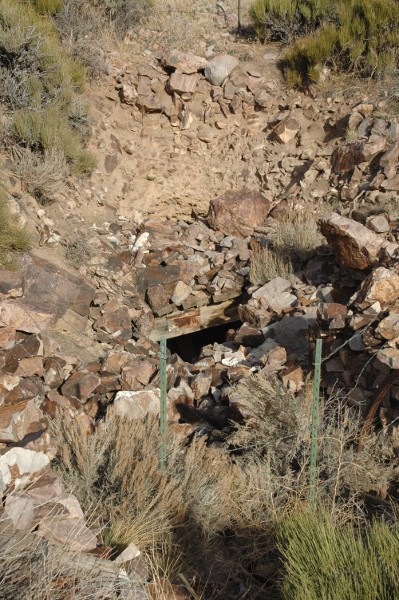 |
| Tony looks down to see if it is safe to descend the ladder. It wasn't so he headed down anyway. |
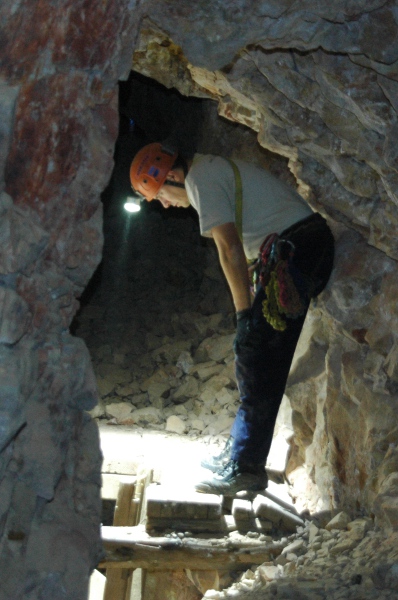 |
| This stope was only a few feet wide but over 100 feet high. It must have been a narrow vein of gold. |
 |
| The mine was worked on and off from the late 1800s into the mid 1900s. We don't know if G.W. Davis was a miner or an early mine explorer. None the less, his mark is still in place. |
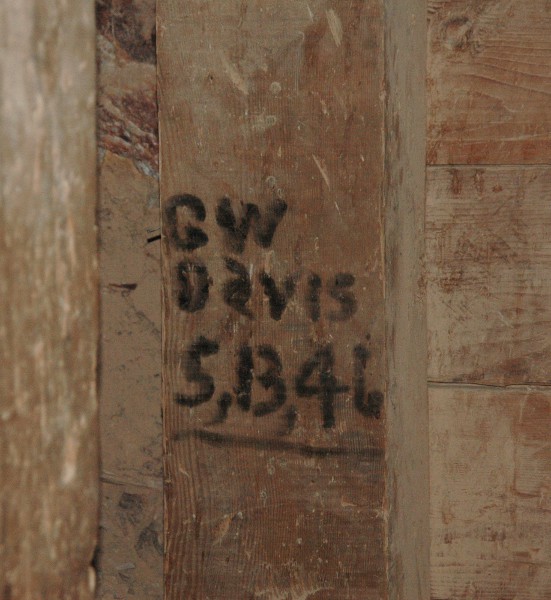 |
| It's a bit of a tight squeeze to get through here. On the previous trip we had to dig this out enough to squeeze through. It's good that we did because it opened up into an additional section of the mine that would have otherwise been lost to history. |
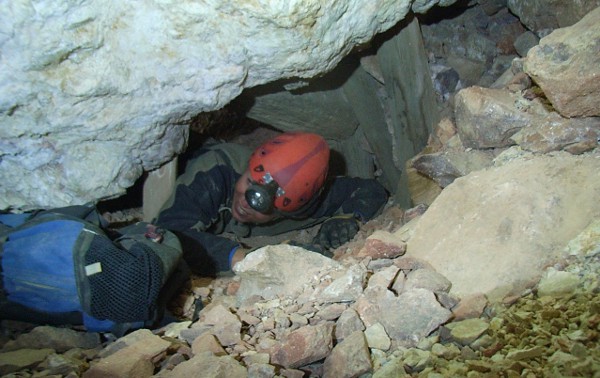 |
| Bill looks down a winze. No ladder so it will be ropes down and back up. |
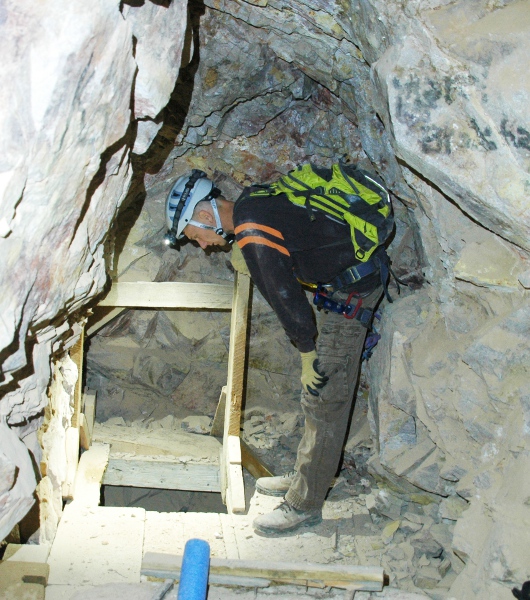 |
| Bill is first down to see if there is anything worth exploring. Sure enough, soon we all headed down. |
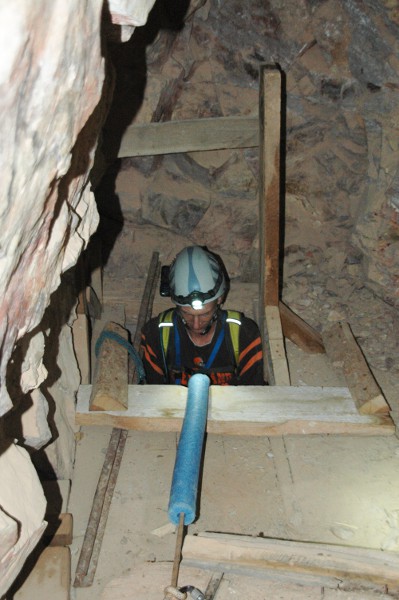 |
| Tony is almost at the bottom. It's close to 100' of free hanging descent. |
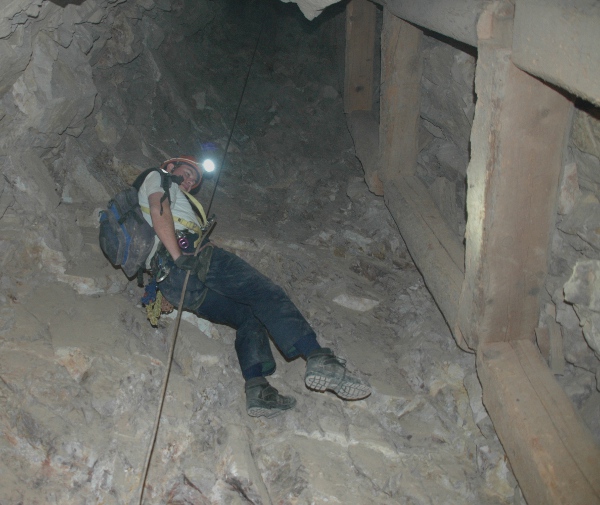 |
| This section of the mine had not been visited for quite some time. No graffiti so be seen down here. It's great to reach places in old mines that haven't been vandalized. |
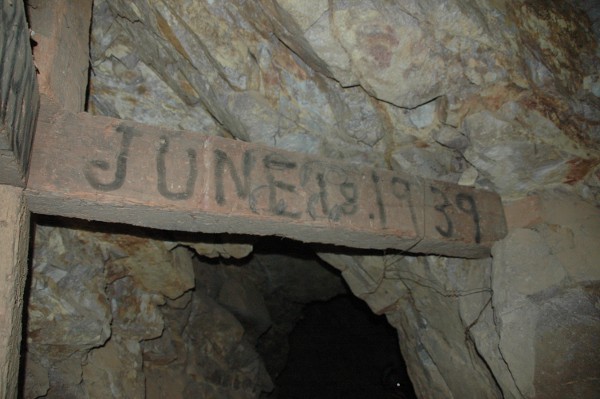 |
We ended up at a collapsed haulway. We worked our way through and found ourselves in the huge stope that we had explored previously. Unfortunately we didn't have any more rope and we needed about 50' to safely descend off this ledge into the stope so we could climb out. We ended up having to retrace our steps including climbing
back up the 100' rope we had left in place as we came in.
Since then we have retraced this route bringing along some extra rope so we could climb out using the "Zig-Zag Ladder of Death". |
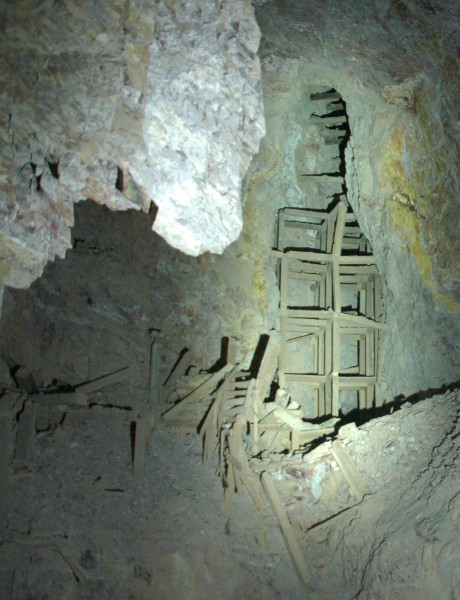 |

























